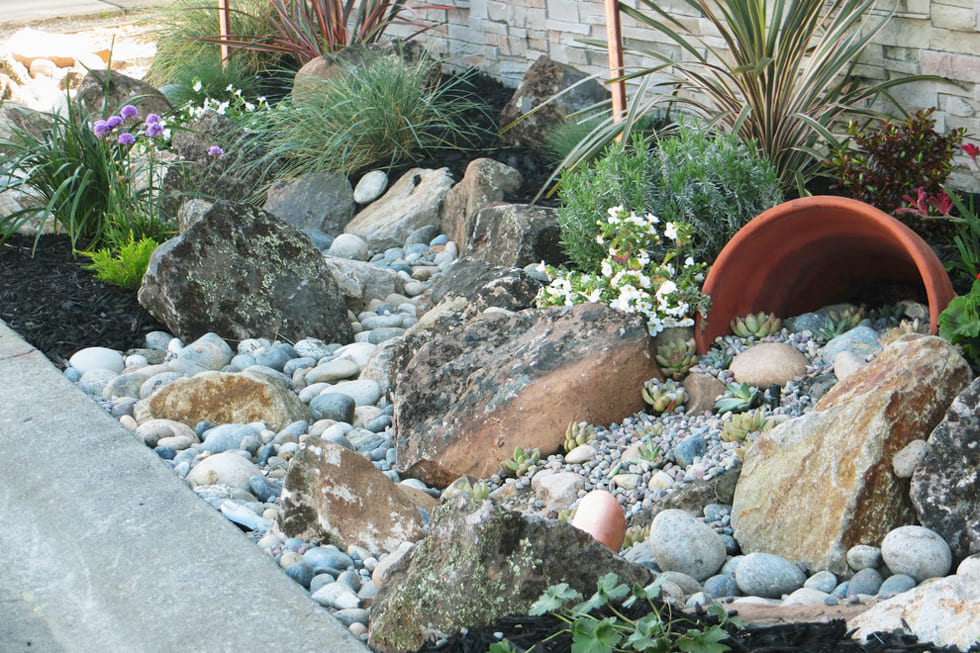Creating a low maintenance front yard is an attractive proposition for many homeowners. Whether you’re a busy professional, a family on the go, or simply someone who prefers to spend less time on yard work and more on enjoying your outdoor space, this guide is designed to help you achieve a beautiful yet effortlessly manageable front yard.
Choose the Right Plants
Selecting the right plants is crucial for minimizing upkeep. Opt for native plants, as they are well-adapted to the local climate and soil conditions, requiring less water, fertilizer, and pest control. Examples include lavender, sedum, and switchgrass, which thrive with minimal intervention. Perennials like coneflower and coreopsis also offer lasting beauty with only occasional maintenance.
Incorporate Mulch
Mulching is a must in any low-maintenance landscaping plan. It helps retain soil moisture, suppress weeds, and reduce the need for frequent watering. Organic mulches like wood chips or shredded bark decompose over time, adding nutrients back into the soil. This not only cuts down on your gardening chores but also improves plant health.
Utilize Hardscaping
Hardscaping elements such as stone paths, gravel beds, and decorative boulders can add texture and interest to your yard without the need for ongoing maintenance. These materials do not require watering, pruning, or other typical garden tasks. Strategically placed, they can greatly reduce the amount of area that needs regular upkeep.
Design for Drought Resistance
Implementing a drought-tolerant landscape design can drastically reduce the need for irrigation. Choose plants that are resistant to dry conditions; succulents, salvia, and ornamental grasses are all excellent choices. Consider installing a drip irrigation system that delivers water directly to the roots of plants, where it’s needed most, to maximize efficiency and minimize wastage.
Opt for Artificial Grass
For those who do not mind going the synthetic route, artificial grass is an excellent alternative to traditional lawns. It requires no mowing, watering, or fertilizing, providing a green and pleasant appearance year-round. Today’s products look remarkably natural and can be a practical solution for busy homeowners.
Implement Edging
Edging is a fantastic way to define different areas of your yard, such as flower beds or pathways. It helps keep various landscaping materials in their designated places and makes the overall appearance of your yard neater and more organized. Materials like stone, metal, or professional-grade plastic edging can provide a clean line and simplify maintenance.
Focus on Perennial Ground Covers
Ground covers such as creeping thyme, vinca, or pachysandra can dramatically reduce the amount of exposed soil in your garden, thus reducing weed growth and soil erosion. These plants spread to form dense mats that require little attention once established, aside from occasional trimming to keep them in bounds.
Plan for All Seasons
Choose plants that offer visual interest in different seasons to keep your yard looking attractive throughout the year. For example, witch hazel provides vibrant flowers in late winter, while burning bush offers stunning fall foliage. This strategy not only enhances curb appeal but also spreads out maintenance chores throughout the year, preventing any single season from becoming too labor-intensive.
Automate Where Possible
Technological advancements have made it easier than ever to reduce manual yard work. Consider installing automated sprinkler systems, which can be programmed to water your plants at optimal times of the day, reducing water waste and ensuring plants get the moisture they need to thrive. Robotic lawn mowers can also handle grass cutting, allowing you to enjoy a perfectly manicured lawn without lifting a finger.
Regular Maintenance Schedule
Even a low-maintenance yard requires some upkeep. Establish a simple, regular maintenance schedule that aligns with the seasons. This might include pruning in early spring, mulching in summer, and a quick clean-up of leaves in the fall. Staying on top of these tasks can prevent them from becoming overwhelming and ensures your landscaping remains in top condition year-round.
By implementing these strategies, you can create a front yard that not only looks great but is also easy to manage. These tips will help you enjoy your outdoor space to the fullest, without the back-breaking work traditionally associated with garden upkeep.


